

Are you tired of trying to figure out which meal will help you shed those extra pounds? Look no further! In this article, we will break down the different meals that are ideal for weight loss.
Whether you are a breakfast person or prefer to dine later in the day, we’ve got you covered with delicious and nutritious options that will support your weight loss goals. Say goodbye to confusion and hello to a healthier you!
Importance of Choosing the Right Meal for Weight Loss
Understanding the role of meals in weight loss
When it comes to weight loss, most people tend to focus on exercise and reducing overall calorie intake. However, the importance of choosing the right meal cannot be overstated. The meals we consume play a crucial role in our weight loss journey.
They impact our calorie control, nutrient balance, satiety factor, fiber content, and protein intake. By understanding the effects of different meals on weight loss, we can make informed choices that will help us achieve our goals more effectively.
Effects of different meals on weight loss
Different meals have varying effects on weight loss. Some meals can aid in speeding up our metabolism, while others may contribute to weight gain. The right meal can help us feel fuller for longer, reducing the likelihood of overeating or indulging in unhealthy snacks.
It can also provide essential nutrients and promote overall health. On the other hand, meals high in calories, unhealthy fats, processed carbohydrates, and added sugars can hinder our weight loss progress. By paying attention to the characteristics of a meal, we can make choices that support our weight loss journey.
Characteristics of a Meal for Weight Loss
Calorie control
One of the most important characteristics of a meal for weight loss is calorie control. To shed pounds, we need to consume fewer calories than we burn.
However, this does not mean that we need to excessively restrict our calorie intake. It’s essential to strike a balance and ensure that we are getting adequate nutrition while creating a calorie deficit.
By choosing meals that are lower in calories but packed with nutrients, we can achieve sustainable weight loss and support our overall health.
Nutrient balance
Another crucial aspect of a meal for weight loss is nutrient balance. Our bodies require a variety of essential nutrients to function optimally. A balanced meal should include a mix of proteins, carbohydrates, and healthy fats, along with vitamins and minerals.
Proteins help build and repair tissues, aid in muscle development and provide a feeling of fullness. Carbohydrates provide energy and fiber, while healthy fats support many vital bodily functions. By ensuring that our meals contain a well-rounded mix of nutrients, we can nourish our bodies and promote weight loss.
Satiety factor
The satiety factor of a meal refers to how satisfied and full it makes us feel. Choosing meals that are high in volume but low in calories can help us feel fuller for longer and prevent overeating.
Foods that are rich in fiber, such as whole grains, fruits, vegetables, and legumes, can promote satiety and help us stay on track with our weight loss efforts. Including lean proteins like chicken, fish, tofu, or beans in our meals can also contribute to a greater feeling of fullness.
Fiber content
Fiber is an essential component of a meal for weight loss. It aids in digestion, regulates blood sugar levels, and promotes a healthy gut. Furthermore, fiber-rich foods are often low in calories and can help us feel satisfied, reducing the temptation to snack on unhealthy options.
By incorporating foods like whole grains, fruits, vegetables, and legumes into our meals, we can increase our fiber intake and support our weight loss goals.
Protein intake
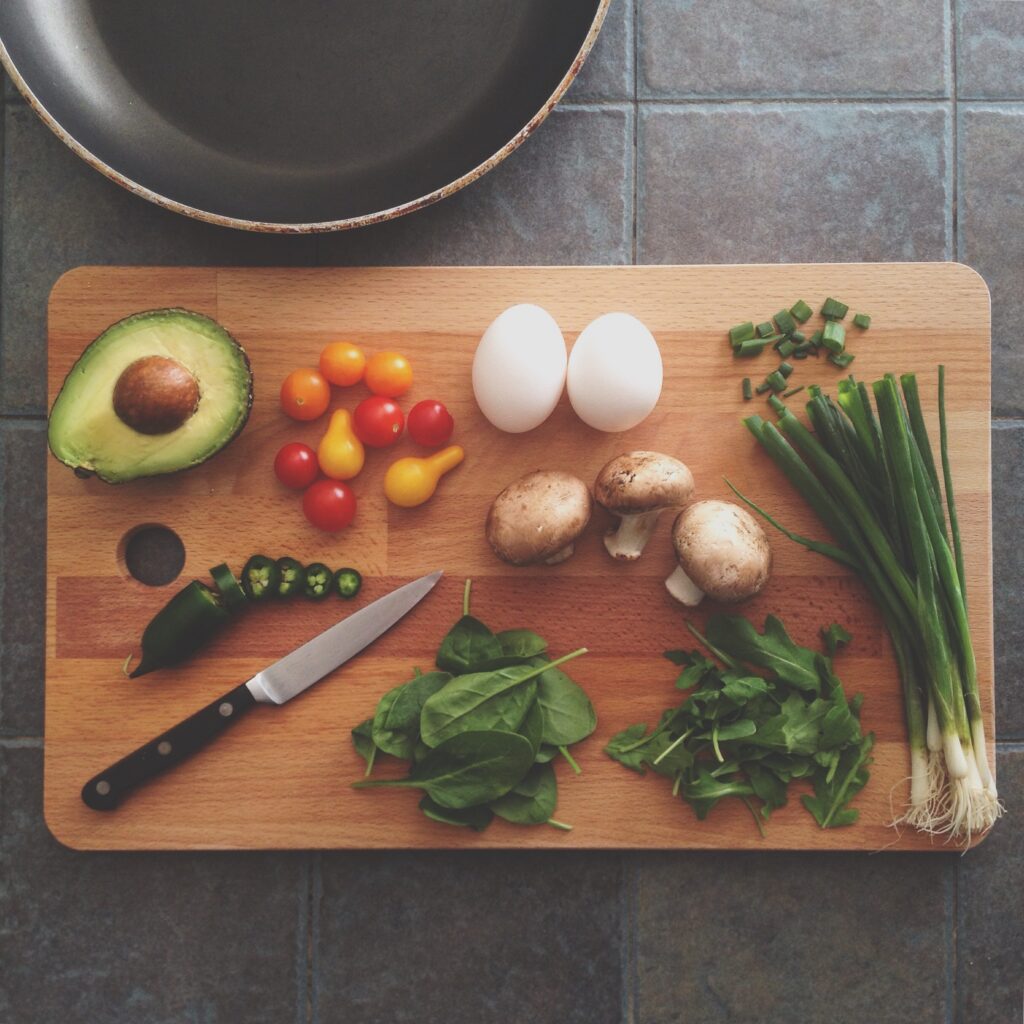

Getting an adequate amount of protein is crucial for weight loss. Protein helps to build and repair tissues, supports muscle development, and aids in the feeling of fullness.
Including lean sources of protein, such as chicken, fish, tofu, or legumes, in our meals can help us reach our weight loss goals more effectively. Protein-rich meals can also boost our metabolism, as the body uses more energy to break down and digest protein compared to carbohydrates and fats.
Breakfast Options for Weight Loss
Wholegrain cereals with low-fat milk and fruit
A great breakfast option for weight loss is a bowl of wholegrain cereals with low-fat milk and fruit. Wholegrain cereals provide fiber, which aids in digestion and promotes a feeling of satiety.
Low-fat milk adds protein and calcium, while fruits contribute essential vitamins and natural sweetness. This combination provides a balanced meal that is both nutritious and satisfying.
Egg white omelet with vegetables
Another excellent choice for breakfast is an egg white omelet with vegetables. Egg whites are low in calories but high in protein, making them an ideal option for weight loss.
Adding a variety of colorful vegetables, such as spinach, bell peppers, onions, and mushrooms, increases the nutrient content while keeping the calorie count low. This
meal provides a healthy dose of protein, vitamins, and minerals to start the day.
Greek yogurt with berries and nuts
Greek yogurt with berries and nuts is a delicious and nutritious breakfast option for weight loss. Greek yogurt is rich in protein, calcium, and probiotics, which support gut health.
Adding a handful of berries, such as strawberries, blueberries, or raspberries, provides antioxidants and natural sweetness. Sprinkling some nuts, like almonds or walnuts, adds healthy fats and a satisfying crunch. This breakfast option is high in nutrients and helps to keep us feeling full until the next meal.
Green smoothie with spinach, banana, and almond milk
For those who prefer a quick and on-the-go breakfast, a green smoothie can be an excellent choice. A green smoothie made with spinach, banana, and almond milk is packed with vitamins, minerals, and fiber. Spinach adds a dose of iron and antioxidants, while banana provides natural sweetness and potassium. Almond milk adds creaminess without adding excessive calories. This smoothie provides a nutrient-rich boost in the morning and can help curb unhealthy cravings throughout the day.
Lunch Options for Weight Loss
Grilled chicken or fish with mixed greens and vegetables
Grilled chicken or fish with mixed greens and vegetables is a classic lunch option for weight loss. Lean proteins like chicken or fish provide satiety and support muscle development. Mixed greens, such as spinach, lettuce, or kale, add fiber and essential vitamins.
Adding a variety of colorful vegetables, like tomatoes, cucumbers, carrots, and peppers, increases the nutrient content and adds a satisfying crunch. This light and refreshing meal is low in calories but high in nutrients.
Quinoa salad with roasted vegetables
A quinoa salad with roasted vegetables is a filling and nutritious lunch option. Quinoa is a protein-rich grain that provides amino acids, fiber, and essential minerals.
Roasting vegetables like bell peppers, zucchini, eggplant, and cherry tomatoes adds a depth of flavor and helps retain their nutrients. Tossing the quinoa and vegetables together with a simple dressing made from lemon juice, olive oil, and herbs creates a flavorful and satisfying meal.
Vegetable soup with lean protein
A warm bowl of vegetable soup with lean protein makes for a comforting and satisfying lunch. Vegetable soups provide a significant volume of food for fewer calories.
Adding a source of lean protein, such as chicken, turkey, tofu, or beans, enhances the nutritional value and satiety factor. Including a variety of vegetables, such as carrots, onions, celery, tomatoes, and leafy greens, ensures a nutrient-rich meal that supports weight loss. This nourishing option is ideal for those looking for a light yet filling lunch.
Whole wheat wrap with turkey and avocado
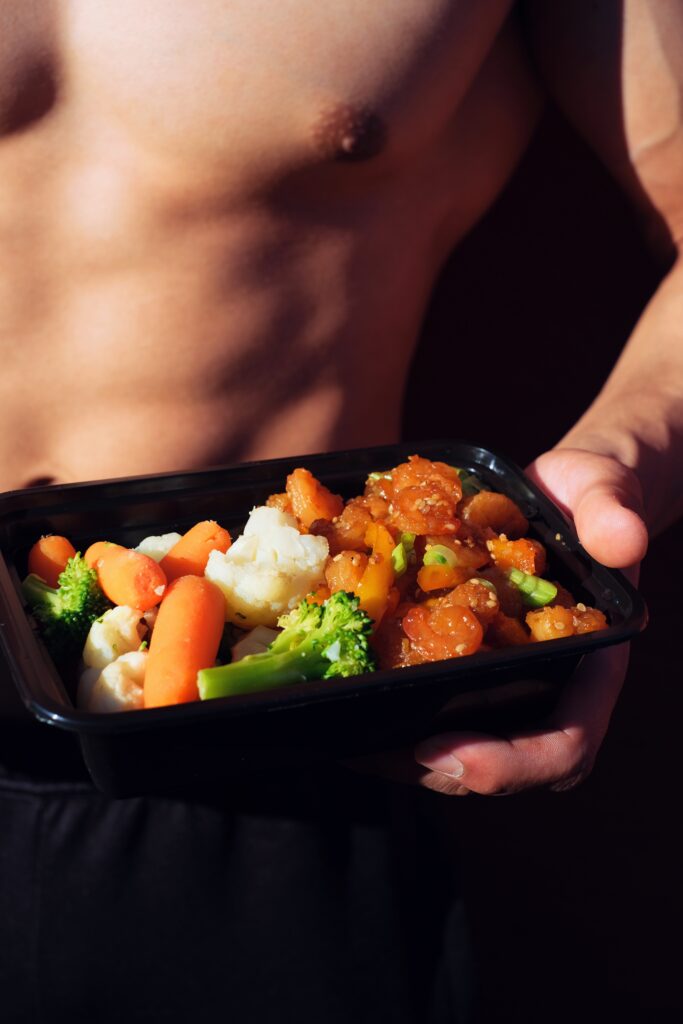

For a convenient and portable lunch option, a whole wheat wrap with turkey and avocado is a great choice. Whole wheat wraps are higher in fiber compared to white bread, providing a more satisfying meal.
Turkey offers a lean source of protein, while avocado adds healthy fats and creaminess. Including lettuce, tomato, and cucumber adds extra crunch and nutrients. This tasty and filling wrap can be prepared ahead of time for a quick and healthy lunch on the go.
Dinner Options for Weight Loss
Baked salmon with steamed vegetables
Baked salmon with steamed vegetables is a delicious and nutritious dinner option for weight loss. Salmon is a fatty fish rich in omega-3 fatty acids, which promote heart health and reduce inflammation. It’s also a great source of lean protein.
Steaming vegetables like broccoli, cauliflower, carrots, and asparagus retains their nutrients while keeping the calorie count low. This meal is not only satisfying but also provides a good balance of protein, healthy fats, and fiber.
Grilled tofu with stir-fried veggies
Grilled tofu with stir-fried veggies is a fantastic vegetarian dinner option for weight loss. Tofu is a versatile plant-based protein that absorbs flavors well and provides satiety. Grilling tofu adds a smoky flavor and texture.
Stir-frying a mix of vegetables like bell peppers, snap peas, mushrooms, and bok choy adds a variety of nutrients and flavors. Adding a drizzle of low-sodium soy sauce or a sprinkle of sesame seeds enhances the taste without adding ex
cessive calories. This meal is not only delicious but also packed with plant-based protein and fiber.
Lean beef or chicken stir-fry with brown rice
A stir-fry made with lean beef or chicken and served with brown rice is a filling and satisfying dinner option for weight loss. Lean cuts of beef or chicken provide protein for muscle development and repair.
Stir-frying a colorful array of vegetables like broccoli, carrots, bell peppers, and snow peas adds fiber, vitamins, and minerals.
Serving the stir-fry with brown rice provides complex carbohydrates that release energy slowly and keep us feeling full. This meal is a wholesome and nutrient-dense option for those looking for a substantial dinner.
Zucchini noodles with tomato sauce and lean protein
For a low-carb and gluten-free dinner option, zucchini noodles with tomato sauce and lean protein are a great choice. Spiralized zucchini serves as a nutritious alternative to traditional pasta, reducing calorie and carbohydrate intake.
Topping the zucchini noodles with a flavorful tomato sauce made from fresh tomatoes, garlic, and herbs adds a burst of flavor without excess calories. Adding a source of lean protein like grilled chicken or turkey meatballs enhances the meal’s nutritional profile and overall satiety.
This meal is light, refreshing, and perfect for those following a low-carb or gluten-free diet.
Snack Options for Weight Loss
Apple slices with peanut butter
Apple slices with peanut butter make for a satisfying and nutritious snack. Apples are high in fiber, vitamins, and antioxidants, and provide natural sweetness. Peanut butter adds healthy fats and protein, making the snack more filling and satisfying. This combination is a perfect balance of sweetness, crunch, and creaminess, and can help curb our hunger between meals.
Hard-boiled eggs
Hard-boiled eggs are a convenient and portable snack that provides satiety and nutrition. Eggs are packed with high-quality protein, essential vitamins, and minerals. They are also low in calories, making them an ideal option for weight loss. Hard-boiled eggs can be easily prepared ahead of time and stored for a quick and protein-rich snack on the go.
Mixed nuts and dried fruits
A handful of mixed nuts and dried fruits is a nutritious and energy-dense snack option. Nuts, such as almonds, walnuts, and cashews, provide healthy fats, protein, and fiber. Dried fruits, like raisins, apricots, or cranberries, offer natural sweetness and a variety of essential nutrients. This combination provides a good balance of nutrients and can help keep us feeling satisfied between meals.
Carrot and celery sticks with hummus
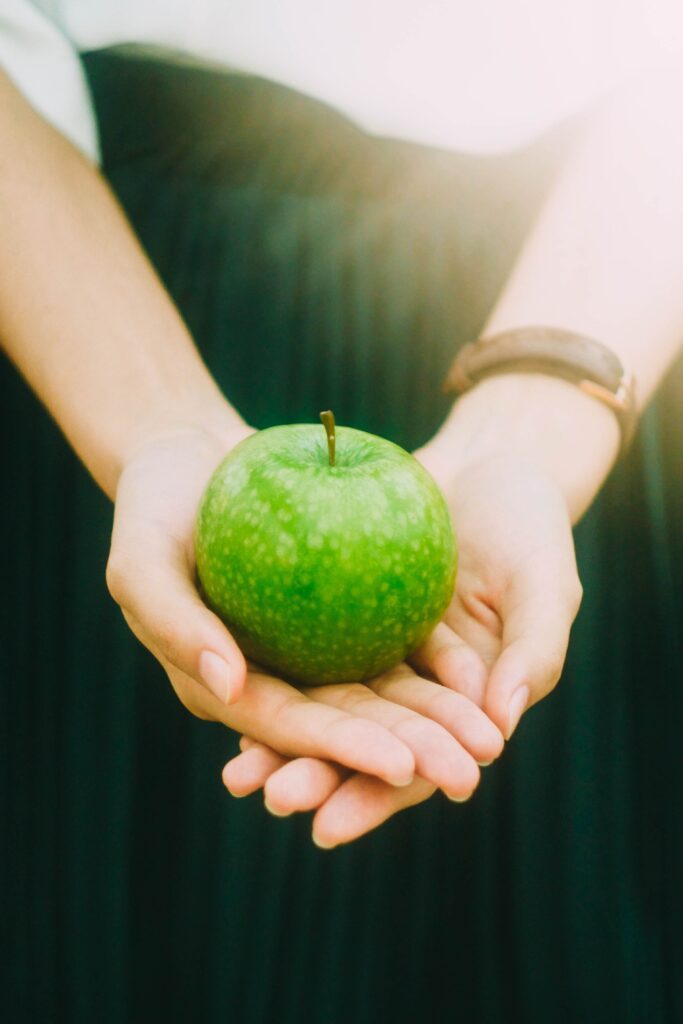

Carrot and celery sticks with hummus make for a crunchy and refreshing snack. Carrots and celery are low in calories and high in fiber, making them an excellent choice for weight loss. They also provide essential vitamins and promote good digestion.
Pairing the vegetable sticks with a serving of hummus adds protein and healthy fats, making the snack more filling and satisfying. This option is ideal for those looking for a healthy and light snack.
Considerations for Weight Loss Meals
Portion control
While choosing the right meals for weight loss is essential, portion control is equally crucial. Even the healthiest meals can contribute to weight gain if consumed in excessive amounts. To maintain a calorie deficit and promote weight loss, it’s important to practice portion control. Measuring and monitoring portion sizes can help us stay on track and avoid overeating.
Avoidance of processed foods
Processed foods are often high in calories, unhealthy fats, added sugars, and sodium. They lack essential nutrients and can hinder our weight loss progress.
Choosing whole, unprocessed foods whenever possible is crucial for achieving weight loss goals. It’s important to read food labels and choose products that are low in added sugars, unhealthy fats, and artificial ingredients.
Mindful eating practices
Practicing mindful eating can greatly aid in weight loss. Paying attention to hunger and fullness cues, eating slowly, and savoring each bite can help us develop a healthier relationship with food. By being present and aware during meals, we can better control our portion sizes, regulate our food choices, and avoid mindless snacking.
Hydration
Staying properly hydrated is essential for overall health and weight loss. Drinking an adequate amount of water throughout the day can help control appetite, boost metabolism, and aid in digestion.
It’s important to drink water before meals to help us feel fuller and avoid overeating. Choosing water as our primary beverage and limiting the consumption of sugary drinks can contribute to successful weight loss.
Balancing macronutrients
Balancing macronutrients, such as proteins, carbohydrates, and fats, is crucial for weight loss. Each macronutrient plays a unique role in our bodies and provides different benefits. By including a mix of lean proteins, complex carbohydrates, and healthy fats in our meals, we can support our weight loss goals and maintain optimal health.
Timing of Meals for Weight Loss
Importance of regular meal schedules
Maintaining regular meal schedules is essential for weight loss. Eating at consistent times can help regulate our appetite, control cravings, and promote a stable metabolism. It’s important to establish a routine and aim for regular meal intervals throughout the day.
Effect of meal timing on metabolism
Meal timing can have an impact on our metabolism. Eating smaller, more frequent meals throughout the day can help keep our metabolism elevated and prevent energy slumps. On the other hand, intermittent fasting has gained popularity as a weight loss method.
It involves restricting eating to specific windows of time, allowing the body to enter a fasted state and potentially promoting fat burning. It is important to find a meal timing approach that works best for our individual needs and preferences.
Recommended intervals between meals
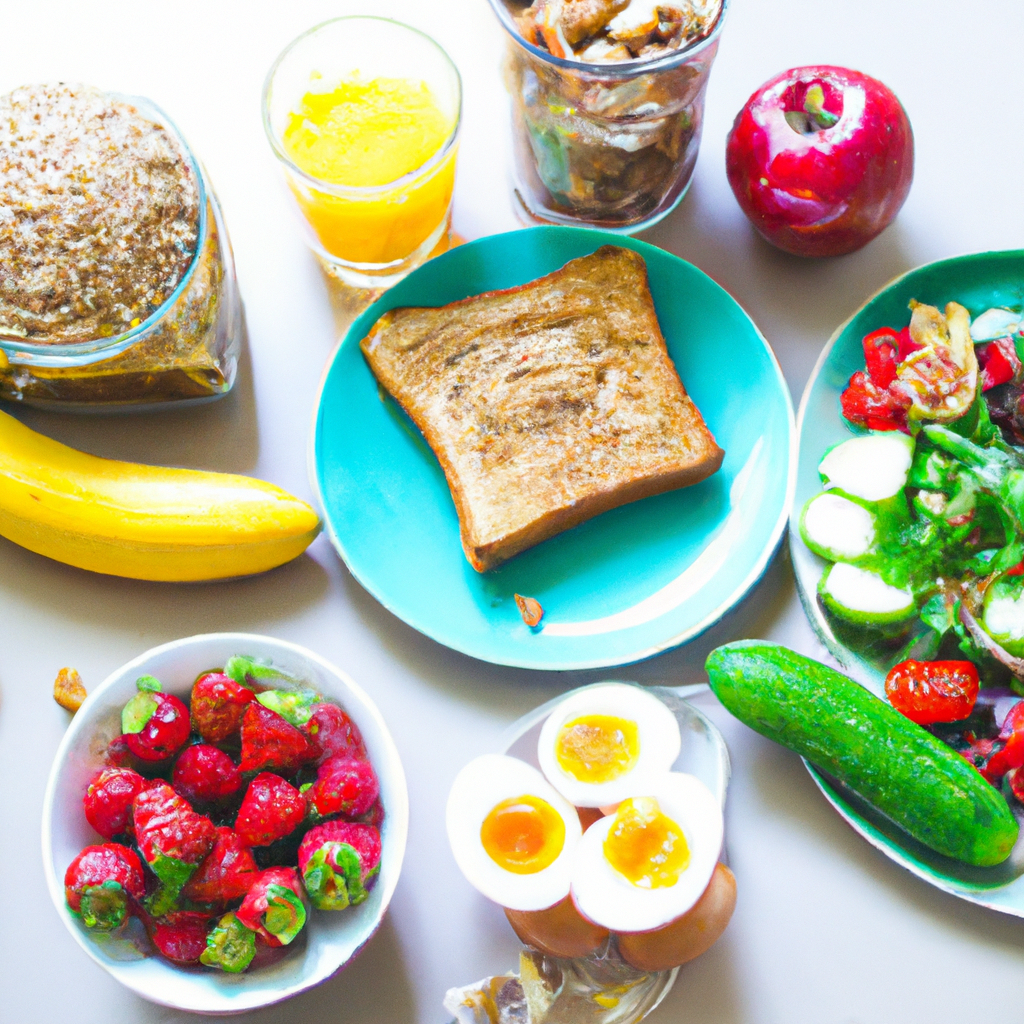

While the recommended intervals between meals may vary for each individual, it is generally recommended to eat every 3-4 hours. This allows enough time for digestion and nutrient absorption while preventing excessive hunger and overeating. It’s important to listen to our body’s cues and adjust the intervals based on our individual needs.
Meal Prepping for Weight Loss
Benefits of meal prepping
Meal prepping is a great strategy for weight loss. It involves preparing meals in advance, usually for a week’s worth of meals, and storing them for later consumption. Meal prepping offers several benefits, such as saving time, promoting portion control, reducing food waste, and allowing for healthier food choices. By having pre-prepared meals readily available, we are less likely to resort to unhealthy options or indulge in unplanned snacks.
Tips for successful meal prepping
To ensure successful meal prepping, it’s important to plan ahead and follow these tips:
-
Set aside dedicated time: Dedicate a specific day or time each week to plan and prepare your meals.
-
Choose a variety of recipes: Select a range of recipes that offer balanced nutrition and keep things interesting. This helps prevent boredom and encourages adherence to the meal plan.
-
Shop for ingredients in advance: Make a shopping list and gather all the necessary ingredients before starting your meal prepping session. This will save time and ensure you have everything you need.
-
Invest in quality food storage containers: Use durable and properly sealed containers to store your prepared meals. This helps maintain freshness and prevents cross-contamination.
-
Practice portion control: Use measuring tools or food scales to portion out your meals. This ensures you are consuming appropriate serving sizes and helps with calorie control.
-
Store meals properly: Label and refrigerate or freeze your prepared meals according to their shelf life. Follow food safety guidelines to avoid spoilage or contamination.
-
Include snacks: Prepare healthy snacks like cut fruits, pre-portioned nuts, or yogurt cups to have readily available for snacking throughout the week.
By following these tips, meal prepping can become an enjoyable and effective way to support your weight loss journey.
Batch cooking and storing options
Batch cooking and storing options can make meal prepping easier and more efficient. Here are a few ideas to consider:
-
Cook in large quantities: When preparing meals, consider making larger portions to yield leftovers. Leftover meals can be stored and enjoyed for future lunches or dinners.
-
Freeze individual servings: If you have limited refrigerator space or prefer to have a variety of meal options, freeze individual servings of your prepared meals. This allows for easy customization and prevents meal fatigue.
-
Pre-portion ingredients: To save time, pre-portion ingredients for recipes that require multiple components. For example, measure out dry ingredients for baking or chop vegetables for stir-fries in advance.
-
Use compartmentalized containers: Compartmentalized containers can help separate different components of a meal, such as proteins, grains, and vegetables. This helps maintain portion control and prevents ingredients from blending together.
Expert Advice for Choosing Weight Loss Meals
Consultation with a nutritionist or dietitian
Seeking advice from a nutritionist or dietitian can provide valuable guidance when choosing weight loss meals. These professionals can assess individual needs, preferences, and health conditions to create personalized meal plans.
They can help educate on portion sizes, macronutrient balance, and food choices to support weight loss while ensuring adequate nutrition.
Individualized meal plans
Individualized meal plans take into account personal factors such as age, gender, activity level, and specific goals.
These plans provide tailored recommendations for calorie intake, macronutrient distribution, and portion control. Working with a nutritionist or dietitian to create an individualized meal plan can increase the chances of success in reaching weight loss goals.
Listening to your body’s needs
Every individual’s body is unique, and what works for one person may not work for another. It’s important to listen to your body’s needs and adjust your meals accordingly.
Pay attention to how different foods make you feel, consider any intolerances or allergies, and adjust portion sizes based on hunger or fullness cues. By being mindful of your body’s signals, you can make informed decisions about the meals that best support your weight loss journey.
Long-term sustainability of chosen meals
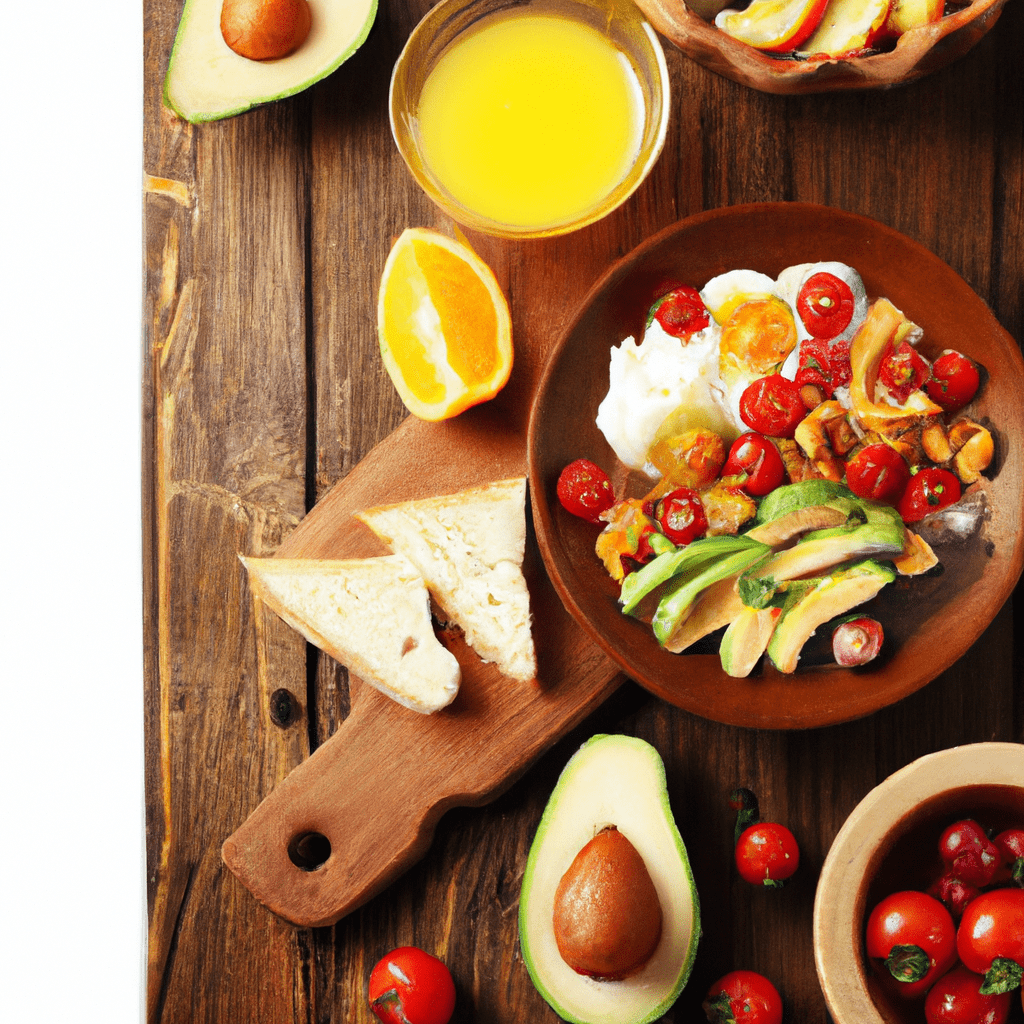

While focusing on weight loss, it’s important to choose meals that are sustainable in the long term. Extreme diets or restrictive eating plans are often difficult to maintain and can lead to nutrient deficiencies or rebound weight gain.
Opting for a balanced and varied diet that includes a wide range of whole, unprocessed foods ensures an ongoing supply of essential nutrients and promotes a healthy relationship with food. Sustainability is key for achieving and maintaining weight loss goals.
In conclusion, choosing the right meal for weight loss is essential for achieving sustainable weight loss goals. Understanding the role of meals in weight loss and considering the characteristics of a weight loss meal can help us make informed choices.
Incorporating nutritious breakfast, lunch, dinner, and snack options into our meal plans can support our weight loss journey and promote overall health. Additionally, considering factors such as portion control, avoidance of processed foods, mindful eating practices, hydration, and macronutrient balance can further enhance the effectiveness of our weight loss meals.
Finally, seeking expert advice, creating individualized meal plans, listening to our body’s needs, and prioritizing long-term sustainability can ensure that our chosen meals support our weight loss goals over the long haul. By incorporating these strategies, we can make positive changes to our eating habits and achieve successful weight loss.







